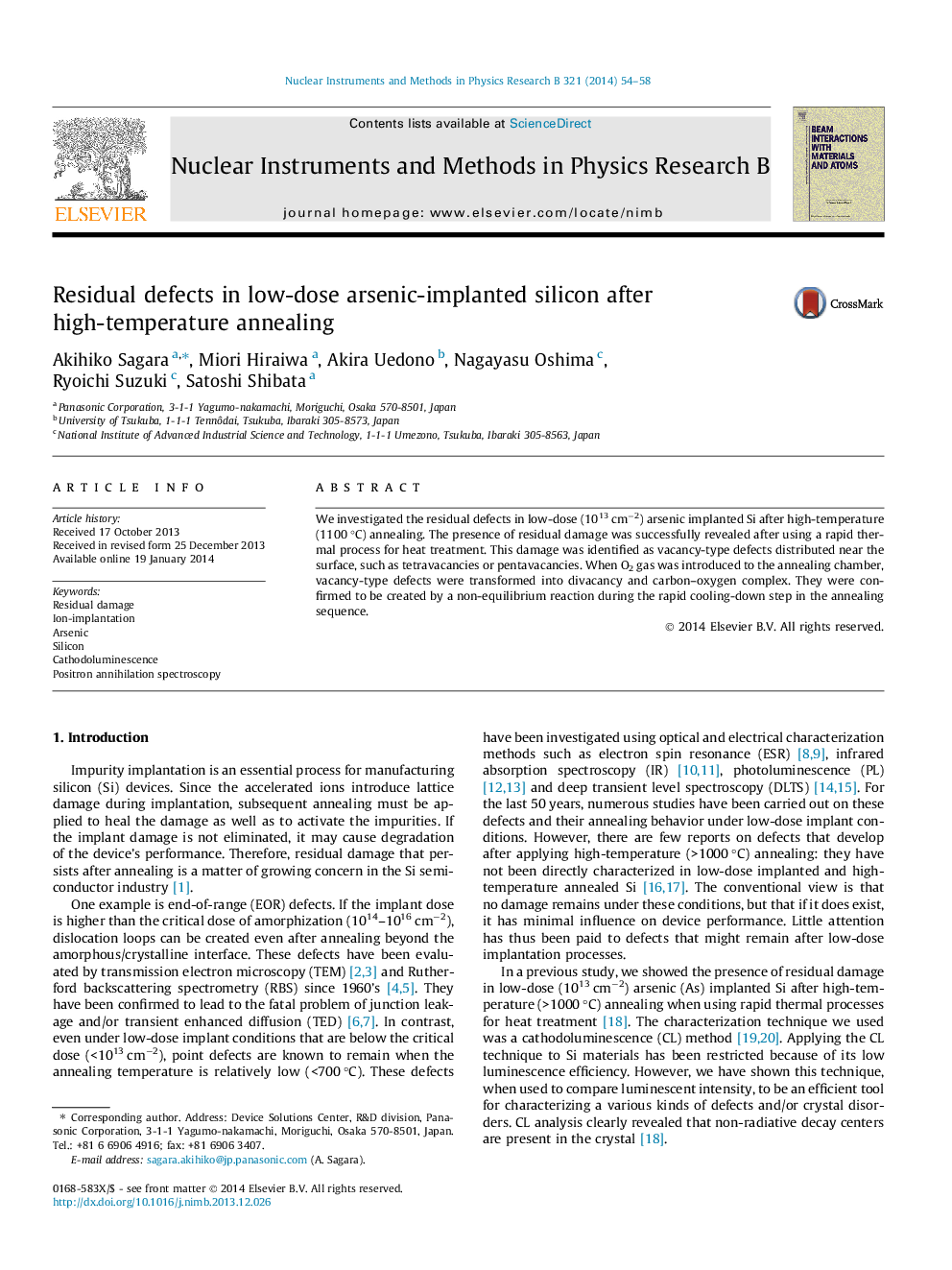| Article ID | Journal | Published Year | Pages | File Type |
|---|---|---|---|---|
| 1680995 | Nuclear Instruments and Methods in Physics Research Section B: Beam Interactions with Materials and Atoms | 2014 | 5 Pages |
Abstract
We investigated the residual defects in low-dose (1013 cm−2) arsenic implanted Si after high-temperature (1100 °C) annealing. The presence of residual damage was successfully revealed after using a rapid thermal process for heat treatment. This damage was identified as vacancy-type defects distributed near the surface, such as tetravacancies or pentavacancies. When O2 gas was introduced to the annealing chamber, vacancy-type defects were transformed into divacancy and carbon–oxygen complex. They were confirmed to be created by a non-equilibrium reaction during the rapid cooling-down step in the annealing sequence.
Keywords
Related Topics
Physical Sciences and Engineering
Materials Science
Surfaces, Coatings and Films
Authors
Akihiko Sagara, Miori Hiraiwa, Akira Uedono, Nagayasu Oshima, Ryoichi Suzuki, Satoshi Shibata,
